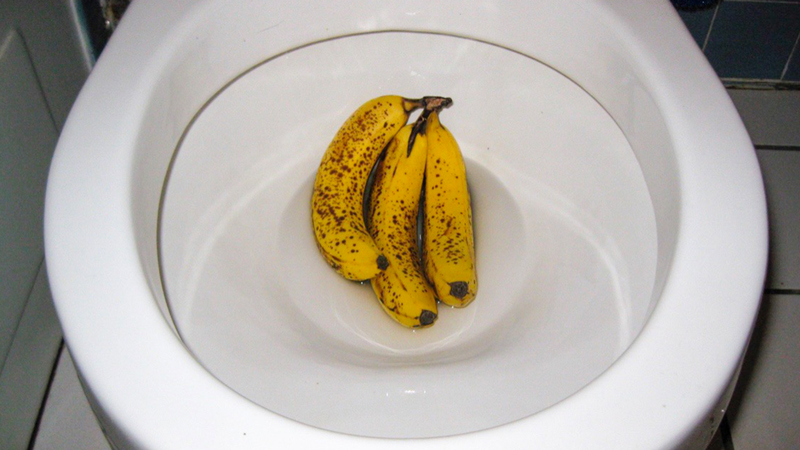The author is making a number of good points on Is it safe to flush food (especially rice) down the toilet? overall in this post in the next paragraphs.

Introduction
Lots of people are usually confronted with the dilemma of what to do with food waste, especially when it comes to leftovers or scraps. One usual concern that develops is whether it's alright to purge food down the commode. In this post, we'll delve into the reasons why individuals could think about flushing food, the effects of doing so, and different techniques for proper disposal.
Reasons that people could take into consideration flushing food
Absence of recognition
Some individuals might not recognize the potential injury brought on by purging food down the bathroom. They might wrongly believe that it's a safe practice.
Ease
Purging food down the commode may seem like a fast and simple service to dealing with undesirable scraps, specifically when there's no nearby trash can readily available.
Laziness
Sometimes, individuals might simply select to flush food out of large laziness, without taking into consideration the effects of their actions.
Repercussions of flushing food down the toilet
Environmental effect
Food waste that winds up in rivers can add to pollution and injury marine ecosystems. Additionally, the water used to flush food can strain water sources.
Plumbing issues
Flushing food can lead to blocked pipelines and drains pipes, creating pricey plumbing fixings and aggravations.
Sorts of food that need to not be flushed
Fibrous foods
Foods with coarse structures such as celery or corn husks can get tangled in pipelines and cause obstructions.
Starchy foods
Starchy foods like pasta and rice can absorb water and swell, leading to obstructions in pipelines.
Oils and fats
Greasy foods like bacon or food preparation oils ought to never ever be flushed down the commode as they can strengthen and cause blockages.
Appropriate disposal approaches for food waste
Using a waste disposal unit
For homes geared up with garbage disposals, food scraps can be ground up and flushed via the pipes system. Nonetheless, not all foods are suitable for disposal in this way.
Recycling
Particular food packaging products can be reused, lowering waste and reducing environmental influence.
Composting
Composting is an environmentally friendly way to throw away food waste. Organic products can be composted and utilized to enhance soil for horticulture.
The relevance of appropriate waste management
Minimizing ecological injury
Appropriate waste management methods, such as composting and recycling, aid decrease contamination and preserve natural deposits for future generations.
Safeguarding pipes systems
By staying clear of the practice of flushing food down the bathroom, homeowners can avoid pricey pipes repairs and maintain the stability of their plumbing systems.
Final thought
To conclude, while it might be appealing to flush food down the commode for benefit, it's important to recognize the possible repercussions of this action. By taking on appropriate waste administration practices and taking care of food waste properly, individuals can add to much healthier plumbing systems and a cleaner atmosphere for all.
FLUSH FOOD DOWN THE TOILET?
FLUSHING FOOD CAN CAUSE BLOCKED DRAINS IN YOUR HOME
All of the plumbing fixtures in your home are connected to the same sewer pipe outside of your home. This outdoor sewer pipe is responsible for transporting all the wastewater from your home to the Council sewer mains. Even small pieces of food that go down the kitchen sink can cause problems for your sewer. It should therefore be obvious that flushing larger bits of food, such as meat, risks a clog in either the toilet itself or the sewer pipes. Flushing greasy food is even more problematic because oil coagulates when it cools, coating the interior lining of your pipes.
THE TOILET IS NOT A BIN
Food isn’t the only thing that people shouldn’t be flushing down the toilet. People use the toilet to dispose of all kinds of things such as tampons, makeup wipes, dental floss, kitty litter and even underwear. Water goes to great lengths to educate residents about the high costs and stress placed on wastewater treatment systems simply from people flushing the wrong stuff down the toilet. It costs taxpayers millions of dollars each year, and homeowners thousands in blocked drain repairs.
FLUSHING FOOD IS A WASTE OF WATER
Flushing food is a waste of our most precious resource - water. In June this year Level 1 water restrictions were introduced to protect water supply from drought conditions. Much of New South Wales continues to be affected by prolonged drought with recent figures revealing up to 97 per cent of the state remains in drought. Depending on whether you have a single or dual flush toilet, every single flush uses between five and 11 litres of water. In the current climate this is a huge amount of water to be wasting on flushing food that should be placed in the bin (or better yet, the compost).
https://www.jabplumbingsolutions.com.au/blog/can-you-flush-food-down-the-toilet

I discovered that blog post about Think Twice Before Flushing Food Down Your Toilet when doing a search on the search engines. Please take the opportunity to distribute this entry if you enjoyed it. Many thanks for your time invested reading it.
Website
Comments on “Are You Able to Flush Food in the Toilet?”